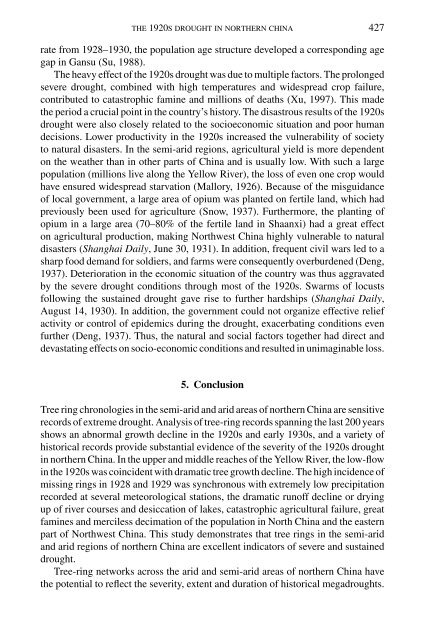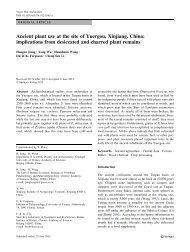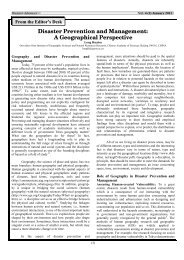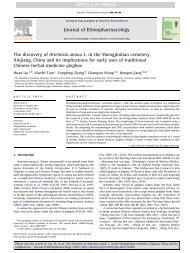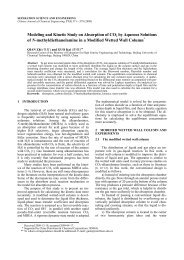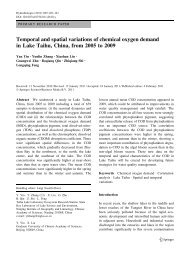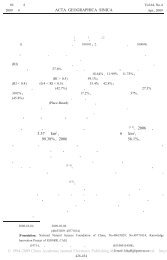THE 1920S DROUGHT RECORDED BY TREE RINGS AND ...
THE 1920S DROUGHT RECORDED BY TREE RINGS AND ...
THE 1920S DROUGHT RECORDED BY TREE RINGS AND ...
Create successful ePaper yourself
Turn your PDF publications into a flip-book with our unique Google optimized e-Paper software.
<strong>THE</strong> <strong>1920S</strong> <strong>DROUGHT</strong> IN NOR<strong>THE</strong>RN CHINA 427rate from 1928–1930, the population age structure developed a corresponding agegap in Gansu (Su, 1988).The heavy effect of the 1920s drought was due to multiple factors. The prolongedsevere drought, combined with high temperatures and widespread crop failure,contributed to catastrophic famine and millions of deaths (Xu, 1997). This madethe period a crucial point in the country’s history. The disastrous results of the 1920sdrought were also closely related to the socioeconomic situation and poor humandecisions. Lower productivity in the 1920s increased the vulnerability of societyto natural disasters. In the semi-arid regions, agricultural yield is more dependenton the weather than in other parts of China and is usually low. With such a largepopulation (millions live along the Yellow River), the loss of even one crop wouldhave ensured widespread starvation (Mallory, 1926). Because of the misguidanceof local government, a large area of opium was planted on fertile land, which hadpreviously been used for agriculture (Snow, 1937). Furthermore, the planting ofopium in a large area (70–80% of the fertile land in Shaanxi) had a great effecton agricultural production, making Northwest China highly vulnerable to naturaldisasters (Shanghai Daily, June 30, 1931). In addition, frequent civil wars led to asharp food demand for soldiers, and farms were consequently overburdened (Deng,1937). Deterioration in the economic situation of the country was thus aggravatedby the severe drought conditions through most of the 1920s. Swarms of locustsfollowing the sustained drought gave rise to further hardships (Shanghai Daily,August 14, 1930). In addition, the government could not organize effective reliefactivity or control of epidemics during the drought, exacerbating conditions evenfurther (Deng, 1937). Thus, the natural and social factors together had direct anddevastating effects on socio-economic conditions and resulted in unimaginable loss.5. ConclusionTree ring chronologies in the semi-arid and arid areas of northern China are sensitiverecords of extreme drought. Analysis of tree-ring records spanning the last 200 yearsshows an abnormal growth decline in the 1920s and early 1930s, and a variety ofhistorical records provide substantial evidence of the severity of the 1920s droughtin northern China. In the upper and middle reaches of the Yellow River, the low-flowin the 1920s was coincident with dramatic tree growth decline. The high incidence ofmissing rings in 1928 and 1929 was synchronous with extremely low precipitationrecorded at several meteorological stations, the dramatic runoff decline or dryingup of river courses and desiccation of lakes, catastrophic agricultural failure, greatfamines and merciless decimation of the population in North China and the easternpart of Northwest China. This study demonstrates that tree rings in the semi-aridand arid regions of northern China are excellent indicators of severe and sustaineddrought.Tree-ring networks across the arid and semi-arid areas of northern China havethe potential to reflect the severity, extent and duration of historical megadroughts.


